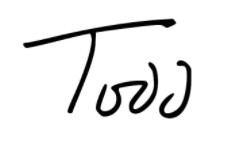With stories, context is everything. When talking with a veteran, it helps to know about their time in service, their war. Without such knowledge, the meaning of their stories can get lost.
That’s why I like to remind people of Four Essential Facts About World War II.
FACT #1: WWII was Huge, Really Huge

WWII Map of World- Axis countries are blue, Allied countries are green (dark green joined the war before Pearl Harbor, light green after). Note the handful of uninvolved gray countries.
World War II was the largest single event in human history. Fought on every continent except Antarctica, with huge battlegrounds in Europe, Asia, and Africa, World War II involved over 70 countries and hundreds of millions of people. The scale of the fighting is almost unimaginable. We’d never experienced anything like it before and haven’t since.
FACT #2: WWII was Catastrophic Beyond Imagining
WWII was the most catastrophic event in human history, dwarfing the Black Death of the 1340s, the flu pandemic of 1918, and every earthquake, fire, or storm in history. Exact death tolls are impossible to determine, but the most complete estimates that include death from illness and political extermination beyond 100 million. Some countries suffered enormously: Germany, Japan, China, Lithuania, Indonesia, Latvia, Belarus, Ukraine. The Soviet Union alone lost an estimated 25 million people. To read through the casualty figures country-by-country taxes the imagination.

Rotterdam Netherlands after the German terror bombing of May 14, 1940
But the numbers don’t tell the whole story. Something in humanity snapped during the war; some moral threshold was crossed, and we never crossed back. Here’s an example: on May 31, 1915– during First World War–a German blimp, a Zeppelin, motored over southern England and dropped a bomb on an apartment building on London’s East End. The bomb exploded, killing Elsie Leggatt, age 3. Elsie was the first person to die in a strategic bombing campaign. Her death was considered an atrocity, and American leaders, not yet involved in the war, toyed with the idea of an international agreement to ban aerial bombardment.
Twenty-five years later, Germany unleashed a terror bombing campaign that killed thousands of British civilians. In China, Japanese air forces bombed cities wholesale. The Allies responded in kind long before Hiroshima and Nagasaki. The world crossed a threshold. Civilians would be targets in war. One American troubled over this in his diary, writing that Western Civilization had degenerated to the point of inhumanity. The comments weren’t remarkable, but their author was: Henry Stimson, United States Secretary of War, and ultimate director of the bombing campaigns.
FACT #3: The U.S. Played a Limited, but Decisive Role in WWII

The Red Army stopped Germany’s advance at Stalingrad. When Hitler heard of his Sixth Army’s surrender on February 2, 1943, he remarked, “The God of War has gone over to the other side.”
By virtue of geography, the United States missed the worst of WWII. The European war began on September 1, 1939, over two years before Pearl Harbor. In Asia, Japan invaded deep into Chinese Manchuria on July 7, 1937, almost 4 1/2 years before Pearl Harbor. The United States fought first in the so-called “soft” war zones of North Africa, Sicily, and Italy before finally launching the straight-on attack against Germany in Normandy on June 6, 1944.
By this time, the decisive and destructive battles of Moscow, Stalingrad, Kursk, and Leningrad were over, and Germany was in retreat. Four-hundred thousand Americans died in World War II. More than that number of Soviet soldiers died at the Battle of Stalingrad alone. The United States was spared such devastation because the war wasn’t fought on American soil.
FACT #4: WWII was Really Two Wars
There was the war in Europe and the war in Asia, and they had very little to do with one another. The war in Europe devolved to a titanic clash between the Soviet Union and Germany. The rest of the belligerents–Italy, France, Britain, the United States, and dozens of others–served as support troops for one side or the other. In Asia, Japan invaded and occupied Chinese Manchuria, sparking the “Second Sino-Japanese War,” which we refer to at the “Pacific War” in the US. Japan and Germany made a pact that they would support each other, but very little of that happened. Instead, the wars took their own courses. That the U.S. was involved in both theaters represents one of the few overlaps between these two wars.
What caused this gigantic catastrophe? That would be a great question for a future post.



